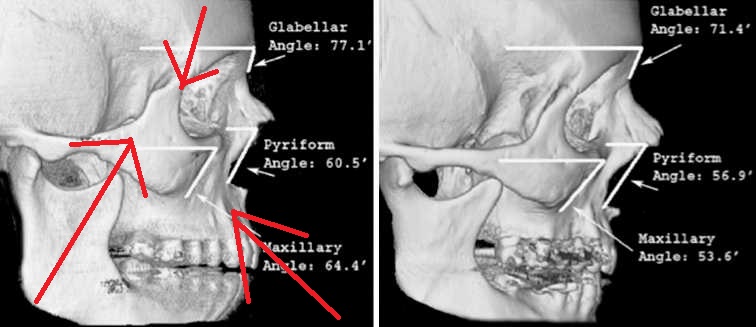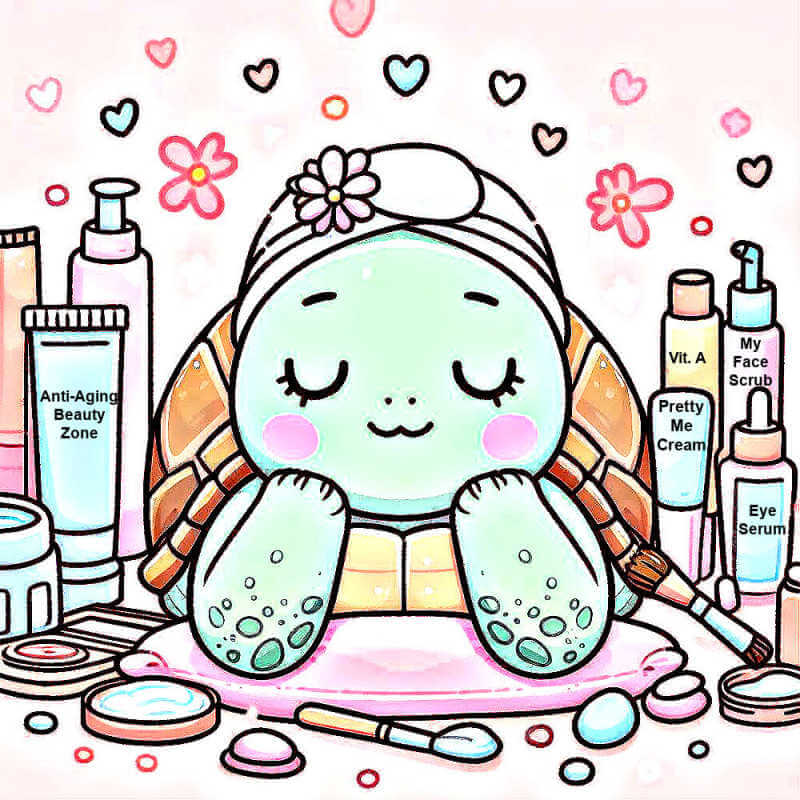- Home
- Sagging Face
- Exercise Facial
I may earn from qualified Amazon & Affiliate purchases at no cost to you.
Benefits of Facial Exercise
Can exercise maintain facial bones and fat pads to slow the look of aging?
by: Linda Robison / Facial Fitness Specialist @ ABZ
Facial exercises can help maintain the youthfulness of your face as you age. Workout routines can help improve skin tone, texture, and muscle strength. And, if performed correctly, they can also contribute to the health of your facial bones.
Why is this important
As we grow older, our facial bones lose volume and begin to recede or shrink. This process affects the appearance of our face and neck.
For instance, a CT scan shows that between the ages of 20 and 60, there's a decrease in bone mass around the eye sockets, contributing to droopy and puffy eyes.
Similarly, the bones in the middle and lower face tend to shrink and recede, which can lead to sagging jowls and necklines.
This reduction in bone mass, combined with the loss of natural volume in facial fat pads, means that our skin and muscles have less support, causing the face to sag.
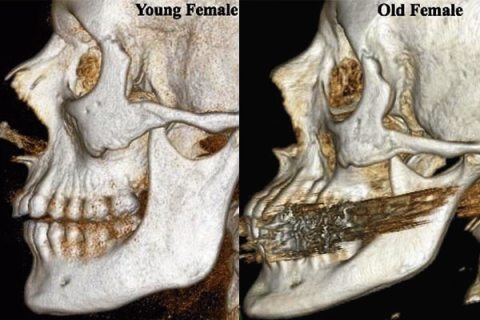 With age, facial bones lose volume and recede (shrink). This affects the look of our face and neck.
(Image credit: Dr. Robert Shaw. 417plasticsurgery.com)
With age, facial bones lose volume and recede (shrink). This affects the look of our face and neck.
(Image credit: Dr. Robert Shaw. 417plasticsurgery.com)In the image above, a CT scan shows that between the ages of 20 and 60, we begin to lose bone mass around the eye sockets, which adds to the appearance of droopy, puffy eyes.
And the bones around the middle and especially the lower face, shrink and recede, which contributes to sagging jowls and necklines.
This decrease in bone mass, along with loss of natural plumpness (facial fat pads in the cheeks) in the mid-face, means the skin and muscle have "less to hold on to", and less support, causing the face to sag downward.
Can facial exercise make a difference?
Facial exercises offer benefits like firmer skin and improved muscle tone. However, for these exercises to be effective, they should apply pressure to the muscles and create tension in the bones.
Dr. Frederick Rossiter, M.D., explains that most facial muscles connect to bones and skin. By contracting the muscles and gently sliding your fingers across the skin's surface, you can build muscle mass and improve skin tightness. This approach also rejuvenates the facial bones.1
How does facial exercises help with aging?
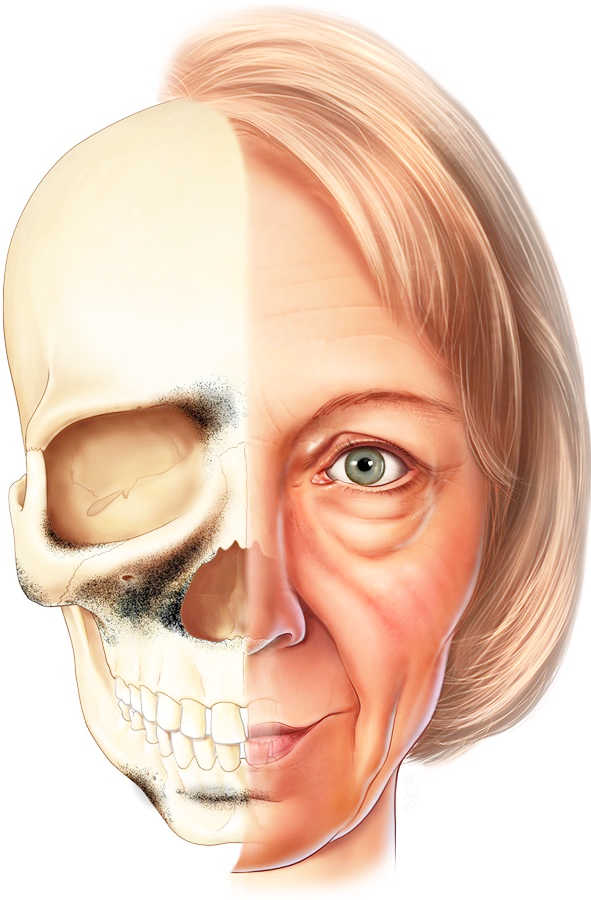 Darken areas show where the greatest bone loss occurs. (Image credit: Aesthetic Plastic Surgery, Bryan Mendelson and Chin-Ho Wong)
Darken areas show where the greatest bone loss occurs. (Image credit: Aesthetic Plastic Surgery, Bryan Mendelson and Chin-Ho Wong)Facial exercises that focus on muscle resistance training, along with pressure on the face and bones, offer several advantages:
- Support healthier skin, making it thicker and less prone to wrinkles.
- Increase muscle density, providing a lifting effect.
- Reduce facial bone loss and promote bone mass, creating volume and fullness.
This combination of muscle building and bone support results in a more youthful appearance. While facial exercises may not provide the same volume restoration as injectable fillers, they offer natural, cost-effective, and side-effect-free results.
Exercises for facial muscles and bone remodeling
There is a difference between simple toning exercises and an anti-aging facial resistance program that builds and strengthens the skin, muscles, connective tissues, and facial bones.
A facial resistance program works all the muscles in the face, stimulating and strengthening the underlying bones. This helps maintain facial bone density, preventing bone loss and keeping the face youthful-looking as we age. See Bone Loss and Skin Remodeling.
Also, it's important to engage in a facial workout that targets hard-to-tone areas – like the lower half of the face (jowls, double chin, neck, and chest) and helps maintain healthy facial bone mass.
Are facial exercises hard to do?
No, they're not hard to do.
It may take a few times to learn the exercises, but after that, you can practically do them in your sleep. Well, at least you can do them in bed!
The exercise facial workout that I currently use suggests you do them lying down to take advantage of gravity.
How can you prevent facial bone loss
You can slow bone loss of the face by doing anti-aging facial exercises that emphasize muscle resistance training, which puts pressure on the face and bones at the same time.
According to Dr. Frederick Rossiter, M.D., sliding your fingers with medium pressure across your skin while firmly contracting underlying facial muscles at the same time helps to:
- Support healthy skin (less papery, thin skin)
- Build muscle density (think lifting)
- Reduce facial bone loss and builds bone mass (think volume and fullness)
What type of exercise facial program is best
There are a lot of good facial exercise programs available, and I can honestly say I tried many of them. But, I’m impressed with the simplicity and ease of Facial Fitness by Carolyn.
Her attention to targeting the classic signs of facial aging along with her ongoing detailed anti-aging research on preventing (and restoring) facial bone loss is impressive.
The fact that this exercise facial program covers all facial aging issues from - droopy eyebrows to sagging turkey neck - and can be done lying down in 15 minutes appeals to my lazy side!
This face exercise program was designed to be done lying down to take advantage of the gravitational pull.
You can do them anywhere you're comfortable, in bed or on the floor. And you don’t have to do them all at once. Do whatever works best for your schedule.
My Exercise Schedule:
In the beginning, I did the 15-minute face workout 4 times a week. Spaced out evenly as possible (like every other day), so the facial muscles had a chance to recover.
Now, many years later, I only do a maintenance workout once a month to keep things balanced. And a facial massages every time I wash my face.
Sample exercise facial workout for the jowls
Here is a sample workout that addresses the jowls.
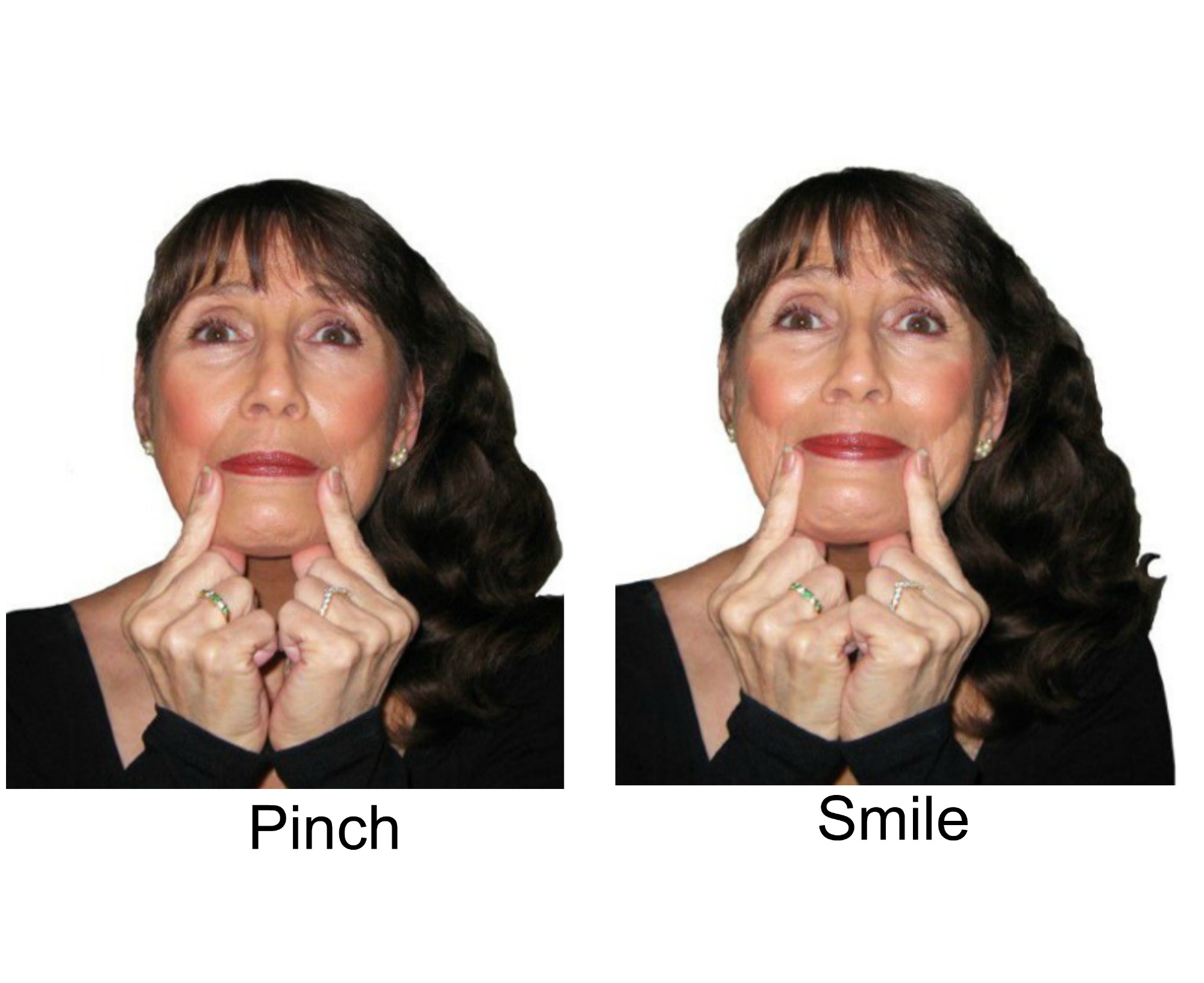
The Jowl Press
This exercise helps tighten sagging pouches along the jowl line.
- Place your thumb and index finger on your jaw bone, directly under the corners of your mouth.
- Use your thumb and index finger to form little "pinchers" around your jaw bone.
- Press your fingers tightly around your jaw bone, close your mouth and try to smile - drawing the corners of your mouth out toward your ears.
- Use your thumb and index finger and try to hold the muscle in place as you smile, creating resistance.
- Hold for a count of 3 and repeat 3 times.
You can perform this exercise several times a day as need.
Cheek and Lower Face Lifter
Here is another wonderful lower face lift and cheek builder. This is a new one, and it really gives you beautiful results for mid and lower face area.
Benefits of exercise facial workouts
The benefits of facial workouts is the ability to achieve a more youthful, fuller face at home for little money.
Volume gives your face a youthful appearance. Have you ever wondered why injectable fillers like Restylane are so popular?
While facial exercise workouts may not restore volume to the extent that injectable fillers can, the results you get from these exercises are natural, cost-effective, and come without any side effects or downtime.
Exercise facial: FAQ's
Q: Do facial exercises really work
A: Yes, they work, as long as you keep doing them. In the beginning, you'll need to do face exercises about 3-4 times a week. Once you've achieved your goals, you can cut back to a maintenance level of 1-2 times a week.
You can see my before and after results here: Sagging face and neck wrinkles.
Q: Are facial exercises for men?
A: Yes! Both men and women can benefit from facial exercises to help firm the face and rejuvenate facial bones.
Q: Do cheekbone exercises actually work?
A: Yes, cheekbone exercises do work if you do them on a regular basis. However, it's best not to spot train. For the best and most elegant results from facial exercises, you should do a full workout. Then, if you have areas of your face that need extra work, you can do bonus exercises to help that area.
Q: How long do facial exercises take to work?
A: That depends on your age, the health of your skin, your diet, and many other factors. But, for most people, slight results can be seen as soon as 4-6 weeks. The full effects of facial exercises can take months to a year. It's important to take pictures weekly, so you can document your progress. Check out my many before and after pictures here. You can see major changes within about 3 months.
Q: Can you strengthen face muscles?
A: Absolutely! That's one of the major advantages to facial exercises. The stronger and firmer your underlying facial muscles are, the firmer your skin will look. And stronger facial muscles can help keep facial fat pads in place. With age, facial fat pads slowly slide downward toward our jowls and neck, this contributes to an "aged" appearance.
About the Author:
Linda Robison is a Facial Fitness Specialist and the founder of Anti-Aging Beauty Zone. She shares expert insights on skincare, facial rejuvenation, and beauty treatments—blending traditional wisdom, personal experience, and science-backed research for both at-home and in-office solutions.
Before you go ....
Please tap on the💙in the bottom right corner if you found this page helpful. Also, Let’s CONNECT! Click the buttons below to follow me on social media.
Thanks so much!
